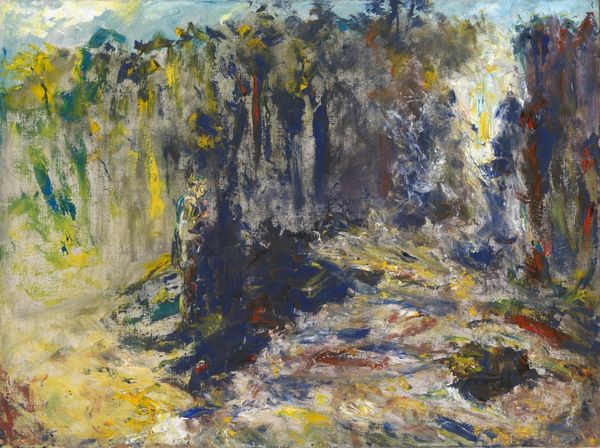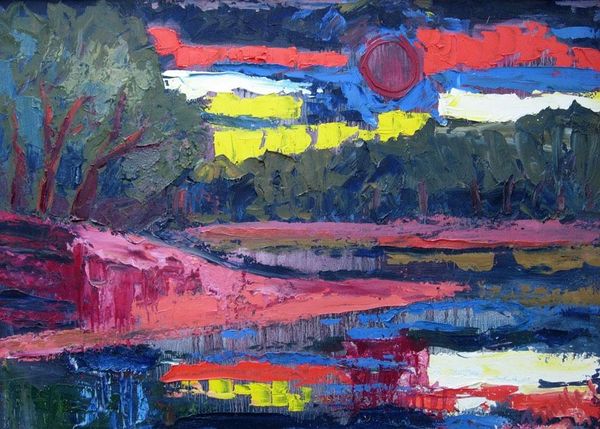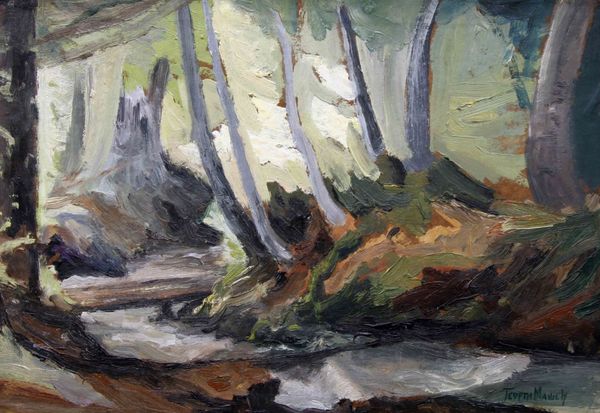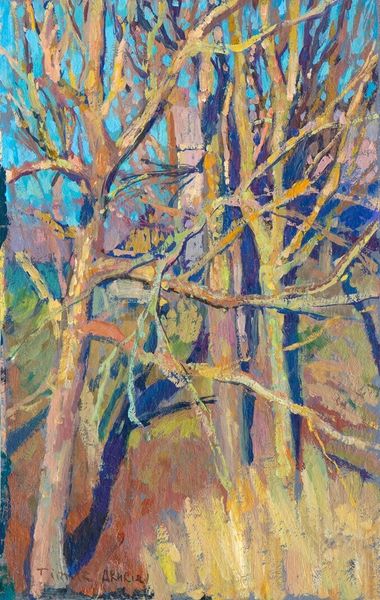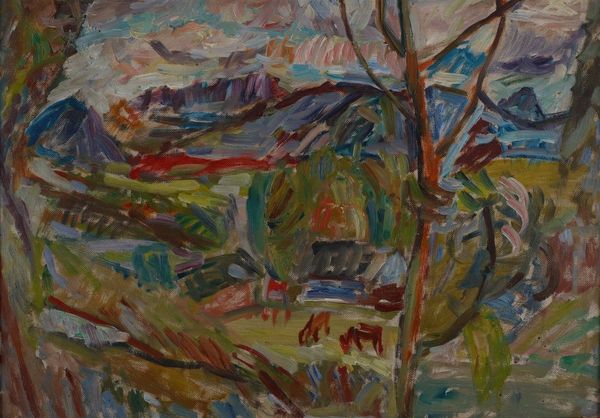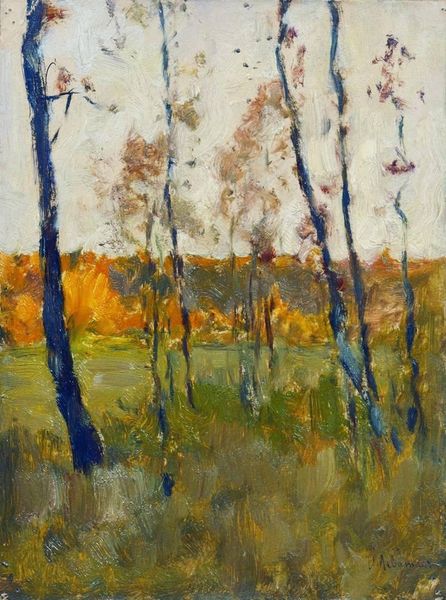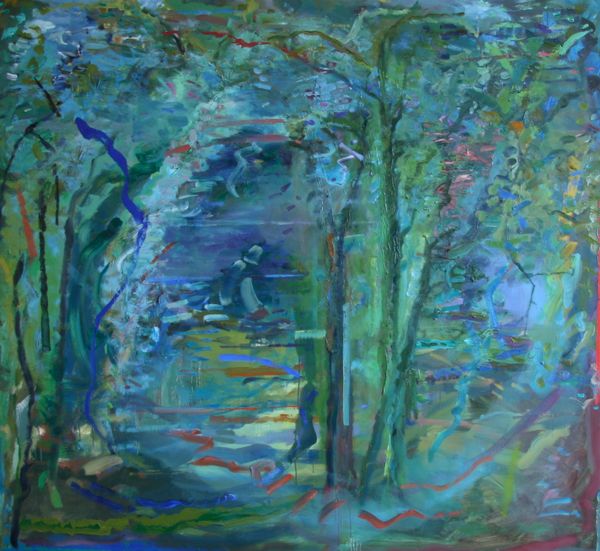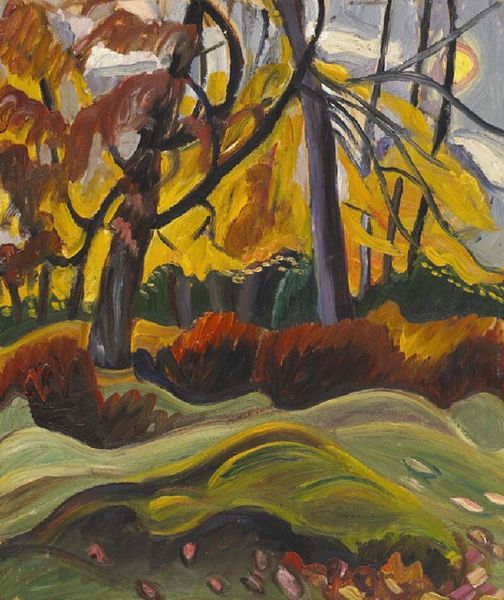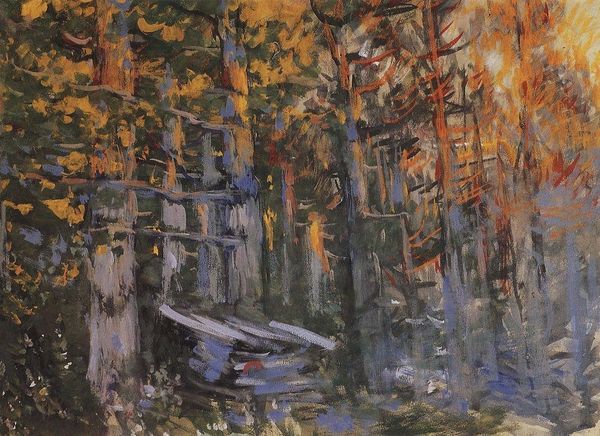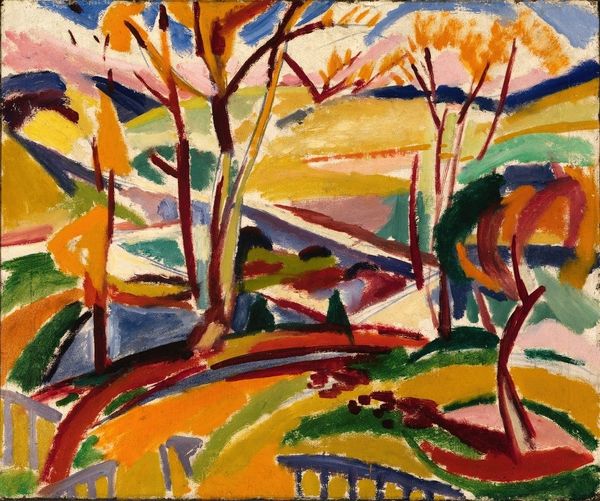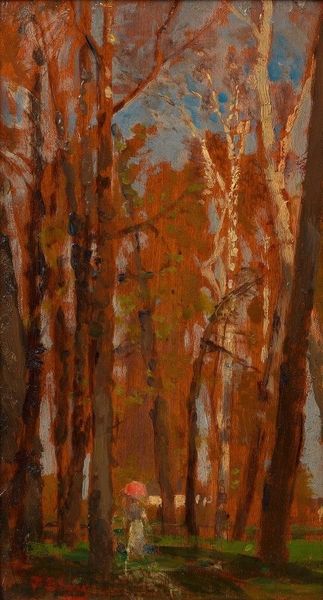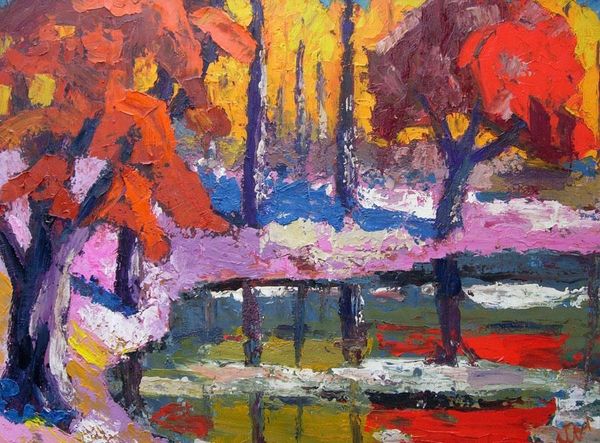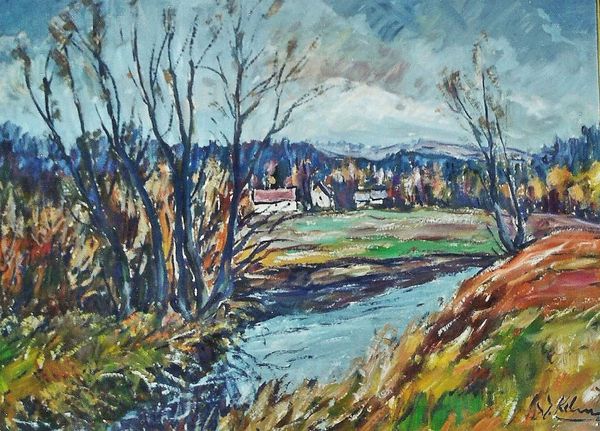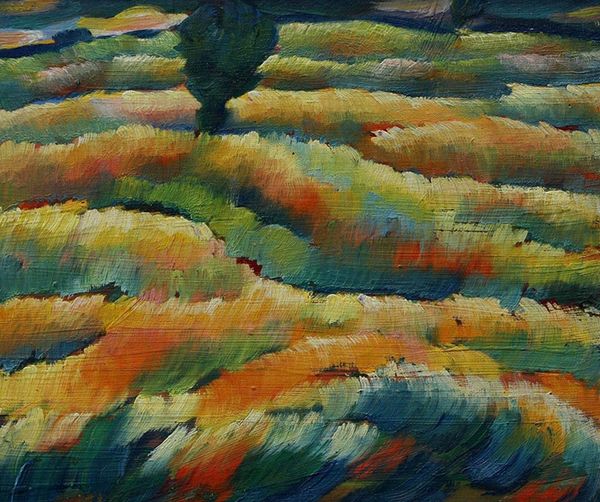
Copyright: Hale Woodruff,Fair Use
Editor: So here we have Hale Woodruff's "Twilight," painted in 1926 using oil paints. It feels almost… unstable. All that gorgeous color, but I can’t quite find a restful spot for my eyes. How do you interpret this work? Curator: You’ve nailed a key tension, I think. Woodruff wrestled with stability, literally and figuratively. Early on, he explored landscapes with a vibrant Fauvist’s palette, right? But within that exuberance… almost a visual argument about nature's underlying, chaotic forces, perhaps even reflecting social and political uncertainties of the time. Don't you feel the tension between the promise of "twilight"—a romantic idea—and the energetic brushstrokes that convey that unease? Editor: Definitely. There’s this lovely glow in the sky, these almost pastel shades, yet the earth itself seems… turbulent, textured with strokes. Curator: Precisely! He lays the oil-paint down in thick, textured strokes; we are clearly experiencing what we would today consider impasto. Imagine him at the easel! Each stroke loaded with emotion, not merely description. Think of his journey. Trained academically, but yearning to depict his own world – a world undergoing dramatic transformation for Black Americans. Does the color perhaps even hint at sunset but maybe even sunrise, symbolizing rebirth or even protest? Editor: It's fascinating how the technique itself tells part of the story. I see the expressionism now—this isn't just a landscape; it’s a feeling. Curator: Exactly! It transcends a simple depiction of dusk. Now, I look and wonder, is there a quiet defiance to it, a visual shout amidst the calming light? What a question to leave us with! Editor: I’m definitely leaving here seeing the painting and the artist in a new light. Thanks for sharing all these insightful interpretations!
Comments
No comments
Be the first to comment and join the conversation on the ultimate creative platform.
